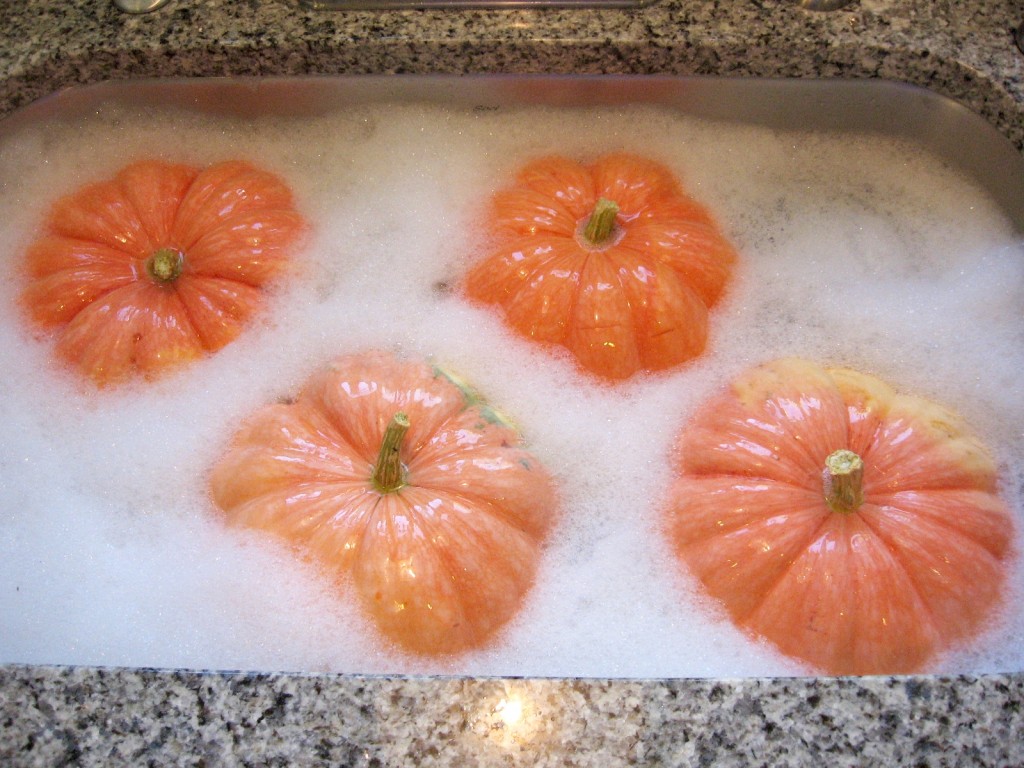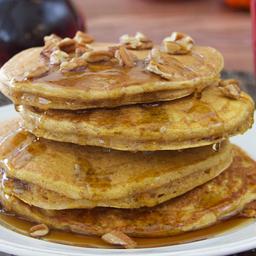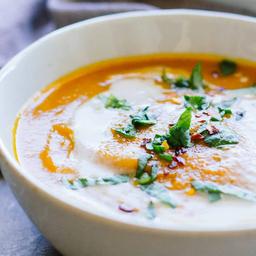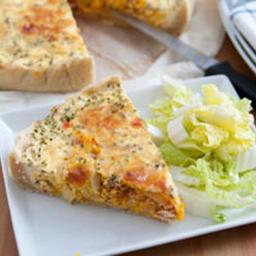
Pumpkins…Pumpkins…I’ve been seeing pumpkins everywhere! When I see pumpkins at every roadside market and in front of the grocery store, I know it’s pumpkin season. September and October are the prime harvesting season for pumpkins, which have been grown in the Americas for over 5000 years. Another fun-fact is that pumpkin is classified in the genus of winter squash. I tend to think of squash (summer and winter squashes) as a vegetable, but like cucumbers, tomatoes, and avocados, squashes contain seeds and come from the flowers of their plants. This technically classifies pumpkin as a fruit and like so many fruits and vegetables, pumpkin is a nutritional powerhouse.
Healthy Benefits of Pumpkin:

Pumpkins You Carve vs Pumpkins You Cook:
Pumpkins are tasty additions or even main ingredients in several dishes, and everyone enjoys carving a pumpkin in October for decoration. It’s essential to know how to choose a cooking pumpkin versus a carving pumpkin (known as a Jack-o’-Lantern). The smaller, heavier pumpkins best for cooking are also referred to as sugar pumpkins or pie pumpkins. You can use the larger pumpkins for cooking but they won’t be as sweet. Always clean your pumpkins with soap and water before cooking or carving.
Jack-o’-Lanterns
Pie Pumpkins


Thinner shell
Contains a lot of water
Have less flesh inside
Smaller and rounder
Found in the produce section
Heavier-full of flesh
Pick your best pumpkin for cooking or decorating:
- Avoid pumpkins with cracks or splits.
- Avoid pumpkins with soft spots or sunken areas.
- Look for a firm green stem.
- Never carry your pumpkin by the stem.
Pumpkin Seeds:
The flat green pumpkin seeds sold in packages (also known as pepitas) are NOT the same seeds found in pie or Jack-o’-Lantern pumpkins. The green shell-less seeds are harvested from Styrian or oilseed pumpkins and are full of nutrients. One cup contains 151 calories, mostly from protein and fat. They are packed with antioxidants and have been shown to reduce the risk of certain cancers. However, you can eat the seeds from your Jack-o’-Lantern pumpkin, after cleaning and roasting them in the oven. (Make these Spice-Glazed Pumpkin Seeds.) Most pumpkins will produce approximately 500 seeds, so there is a lot of bang for your efforts if you harvest the seeds yourself!
Pepitas Jack-o’-Lantern Seeds
Cooking With Pumpkin:
Fresh, frozen, or canned pumpkin is a great flavor enhancer and thickener for all kinds of recipes. Vegan recipes often use pumpkin to replace eggs as a binder, particularly in breads and cakes. Substitute 1 egg with ¼ cup of pumpkin puree.
- Store-bought canned pumpkin retains many of the health benefits of fresh pumpkin, and because excess water is removed, there is an increased amount of fiber per cup. Sometimes, you want a delicious pumpkin dish but don’t have the time (or energy) to prepare a fresh pumpkin. Be sure to buy pumpkin puree and not the sweetened pumpkin PIE puree, or you’ll be hit with a load of added sugar. A side note, though, many cans of pumpkin you buy at the store actually contain a pumpkin cousin – the Dickinson squash. However, the nutrients are similar, and the puree tastes very similar to pumpkin.
 A pumpkin kept in a cool dry place can last for months, but it’s also easy to freeze until you’re ready to use it. To freeze, cut the pumpkin into large pieces and spread them in a roasting pan. Roast at 350 °F until the pumpkin is fork tender. Remove it from the oven and allow to cool. Scoop the pumpkin flesh out of the shell. Blend until smooth. Freeze in freezer-safe containers or bags. Keep pureed pumpkin in the refrigerator for up to one week and in the freezer for up to one year. But don’t wait a whole year to use your pumpkin! Soups, pasta sauces, cakes, cookies, smoothies and so many more recipes call for pureed pumpkin! Find loads of delicious pumpkin recipes in your DinnerTime Recipe Box.
A pumpkin kept in a cool dry place can last for months, but it’s also easy to freeze until you’re ready to use it. To freeze, cut the pumpkin into large pieces and spread them in a roasting pan. Roast at 350 °F until the pumpkin is fork tender. Remove it from the oven and allow to cool. Scoop the pumpkin flesh out of the shell. Blend until smooth. Freeze in freezer-safe containers or bags. Keep pureed pumpkin in the refrigerator for up to one week and in the freezer for up to one year. But don’t wait a whole year to use your pumpkin! Soups, pasta sauces, cakes, cookies, smoothies and so many more recipes call for pureed pumpkin! Find loads of delicious pumpkin recipes in your DinnerTime Recipe Box.- Canning pumpkin is fairly easy for those that like to can, but you will need a pressure canner. Here is a link for instructions to can.
Pumpkin Decorations:
Decorating with pumpkins is so fun. I like to decorate my front porch with pumpkins, gourds, dried corn stalks, hay bales and pots of mums. I’ve seen really fun ways to decoupage, paint, and even gilding pumpkins. Here are some fun (and scary!) templates for carving pumpkins. I like to use pumpkins as flower vases. (Insert a container in the hallowed out pumpkins to hold the water and stems.) The first step before doing any decorating is cleaning your pumpkins and gourds. 
- Fill your sink with water and add 1 Tbsp dish soap per gallon. (You may also add 1 Tbsp bleach per gallon of water if desired.)
- Let pumpkins soak 5 minutes. This kills any bacteria on the surface of the pumpkin that can lead to early rot.
- Gently remove any visible dirt with your hands or a soft scrub brush.
- Rinse pumpkins and dry thoroughly. Moisture is not your pumpkin’s friend.
Fun Pumpkin Fact:
The largest pumpkin ever grown weighed in at a whopping 2,702 pounds
– Angela Jansen, Vice President, Analytics and Population Health
~Kingsley Mooney, Customer Delight Manager
Pumpkin Recipes The Family Will Love!
Search for more recipes in your DinnerTime Recipe Box.
Use the filter function (found on right of your DinnerTime Recipe Box search) to find desserts, main dish, side dishes etc.




